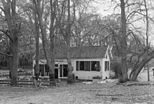
Frans Hals the Elder was a Dutch Golden Age painter. He lived and worked in Haarlem, a city in which the local authority of the day frowned on religious painting in places of worship but citizens liked to decorate their homes with works of art. Hals was highly sought after by wealthy burgher commissioners of individual, married-couple, family, and institutional-group portraits. He also painted tronies for the general market.

The Grote Kerk or St.-Bavokerk is a Reformed Protestant church and former Catholic cathedral located on the central market square in the Dutch city of Haarlem. Another Haarlem church called the Cathedral of Saint Bavo now serves as the main cathedral for the Roman Catholic Diocese of Haarlem-Amsterdam.

The Cathedral of Saint Bavo is a cathedral in Haarlem, the Netherlands, built by Joseph Cuypers from 1895 to 1930 to replace the former waterstaatskerk in the Jansstraat called the St. Joseph. That church was itself a replacement for the Sint-Bavokerk, that had been converted to Protestantism from Catholicism in 1578. The Cathedral of Saint Bavo now serves as the main cathedral for the Roman Catholic Diocese of Haarlem-Amsterdam. Within the cathedral, the former sacristy has been converted into a small museum (schatkamer) containing historical artefacts from Haarlem's Catholic past.

Pieter Jacobsz Codde was a Dutch painter of genre works, guardroom scenes and portraits.

Isaac Abrahamszoon Massa was a Dutch grain trader, traveller and envoy to Russia. He wrote memoirs related to the Time of Troubles and created some of the earliest maps of Eastern Europe and Siberia. Due to Massa's experience in and knowledge of Russia, he was valued by the Dutch States-General as a counterweight to growing English influence in Russia in the early seventeenth century. The Isaac Massa Foundation was established in his honor in Groningen. It aims to stimulate scientific and cultural contacts between the Russian Federation and the Netherlands.
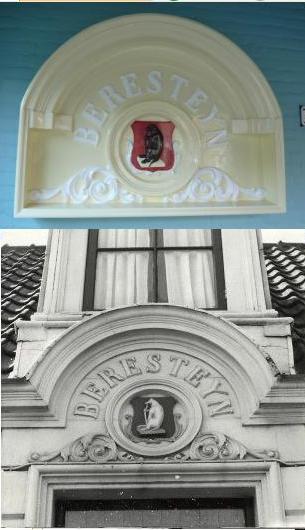
The Hofje van Codde en Beresteyn is a hofje in Haarlem, Netherlands. The current building is from 1968 and is located on the J. Cuyperstraat, which is named for the architect who designed the Cathedral of Saint Bavo next door, Joseph Cuypers. This hofje is the wealthiest hofje foundation in Haarlem with the most modern facilities for its inhabitants. Poor (devote) Catholic women of Haarlem 60 years and older are still welcome to live there for free.

Elswout is a historical buitenplaats dating from the 19th century in a park by the same name in Overveen, Netherlands.

Beijnes is a defunct Haarlem manufacturer of carriages, buses, trains, and trams. It was closely associated with the Hollandsche IJzeren Spoorweg-Maatschappij (HIJSM)

The Haarlem Bank van Lening is a former city Bank van Lening that has been converted to a restaurant in Haarlem, the Netherlands.

Gijsbert Claesz van Campen, was a Dutch cloth merchant of Haarlem who is most famous today for his family portrait painted by Frans Hals. The sitters in this painting have been identified by Pieter Biesboer as the family of Gijsbert Claesz. van Campen and is today split into three parts; the left half is in the collection of the Toledo Museum of Art, with an extra baby lower left added by Salomon de Bray in 1628, the center half is in the collection of the Royal Museums of Fine Arts of Belgium, Brussels, and a third fragment on the far right from a private collection in Europe make up the three known surviving pieces of the original portrait. These three segments were reunited at the Toledo Museum of Art for an exhibition October 18, 2018 – January 6, 2019. The exhibition traveled to the RMFAB in Brussels from February 2 – April 28, 2019 and the Collection Frits Lugt in Paris, from June 8 – August 25, 2019.

Henricus Petrus Baard, was director of the Frans Hals Museum from 1946-1972.

Yonker Ramp and His Sweetheart is an oil-on-canvas painting by the Dutch Golden Age painter Frans Hals, painted in 1623 and now in the Metropolitan Museum of Art, New York City. The painting has also been titled as Young Man and Woman in an Inn or Portrait of Pieter Ramp.

Pieter Ramp, was a Dutch Golden Age member of the Haarlem schutterij.
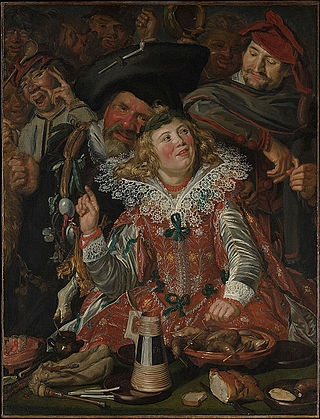
Shrovetide Revellers, also known as Merrymakers at Shrovetide, is a painting by the Dutch Golden Age painter Frans Hals, painted in around 1616–17. It is one of the earliest surviving works by Hals, and has been held by the Metropolitan Museum of Art, New York City since 1913. The painting shows people festivities at Shrovetide, an annual carnival of food and jollity which takes place before the Christian fasting season of Lent.

Two singing boys with a lute and a music book is a painting by the Dutch Golden Age painter Frans Hals, painted c. 1625 and now in the Museum Schloss Wilhelmshöhe.

The Smoker is an oil-on-panel painting by the Dutch Golden Age painter Frans Hals, painted in 1626 and now in the Metropolitan Museum of Art, New York City.

Haerlempjes refer to a specific genre of landscape painting that includes a view of Haarlem. It is used most often to refer to Jacob van Ruisdael's panoramic views of the city, but the term is derived from mentions in Haarlem archives as a type of painting included in household inventories. The diminutive suffix "pje" would denote a small, cabinet-sized painting, but even the largest landscapes may be referred to as Haerlempjes today.
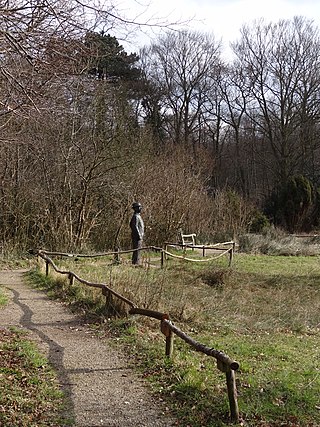
Thijsse's Hof is a wildlife garden in Bloemendaal, the Netherlands. It was created in 1925 on the occasion of the 60th birthday of Jac. P. Thijsse, naturalist and nature conservationist. It is the oldest wildlife garden in the Netherlands, and one of the oldest of Europe, and in the world.
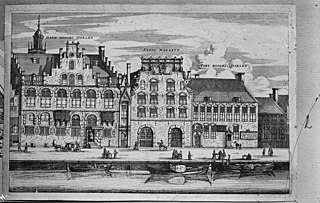
The Voetboogdoelen was a 16th-century building on the Singel canal in Amsterdam, at the corner of Heiligeweg near Koningsplein square, which served as headquarters and shooting range of the local schutterij. Frans Hals painted a group portrait for the Voetboogdoelen, known as the Meagre Company.

Portrait of the Trip Sisters, also known as Portrait of Margarita Trip as Minerva Teaching Her Sister Anna Maria Trip, is an oil on canvas painting by Dutch artist Ferdinand Bol, created in 1663. It is in the collection of the Rijksmuseum, in Amsterdam, but is currently displayed at the Royal Netherlands Academy of Arts and Sciences, also in Amsterdam. It is signed and dated 'fBol 1663'.




